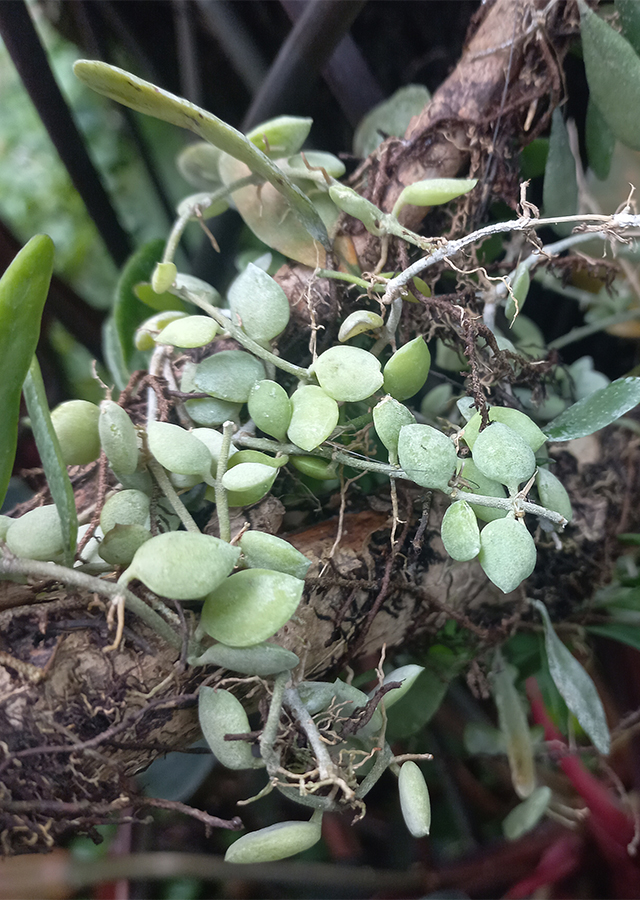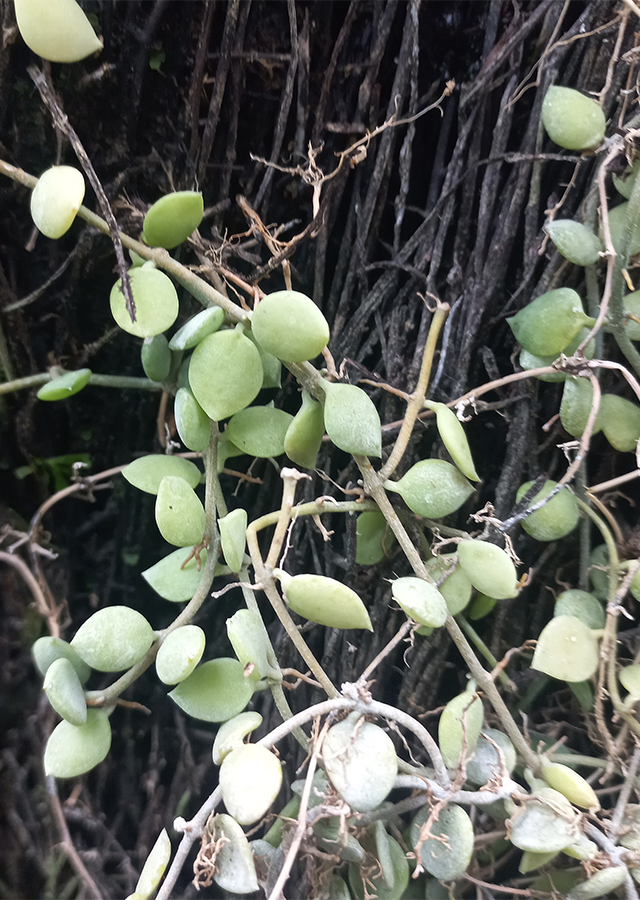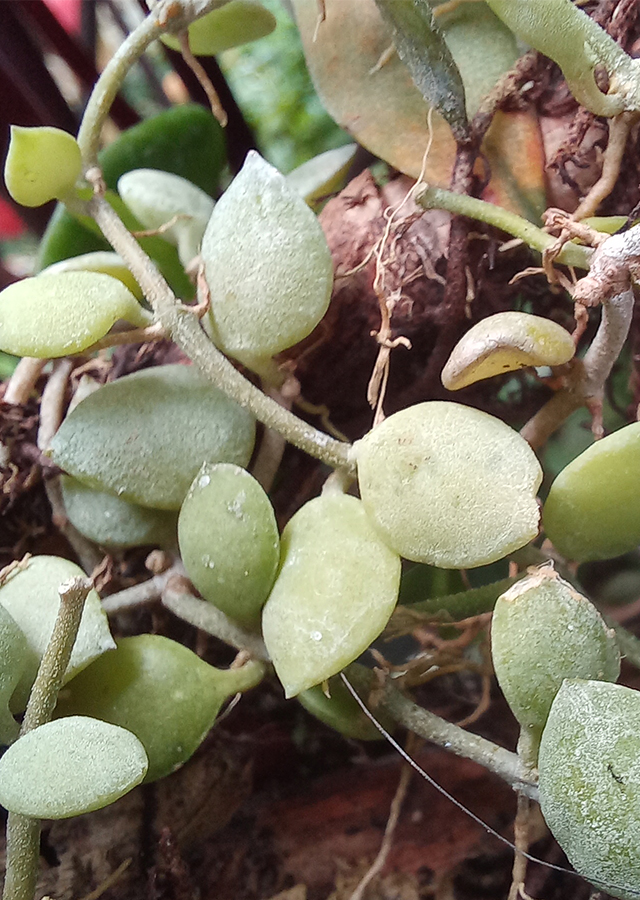String of Nickels
Dischidia nummularia R.Br.
Apocynaceae
Location in our garden
Green House



Synonym
Collyris minor Vahl
Dischidia actephila Schltr.
Dischidia aemula Schltr.
Habitus
Climbers. Vines, annual epiphytes grow elongated
Part Used
Leaves
Sap
Growing Requirements
Full Sunshine
Need Shade
Habitat
Forest
Terrestrial
Overview
Spread in India, Sri Lanka, China (In the Southern provinces - South Yunnan, Fujian, Guangdong, Guangxi, Hainan) Thailand, Vietnam, Laos, Malaysia, Indonesia, Australia, Pacific Islands, Southeast Asia. This plant is widely used as an ornamental plant that is planted in hanging pots because it can grow lengthwise. In addition to that, this plants are also used as traditional medicine.
Vernacular Names
No found data on this. Need further research.
Agroecology
This plant grows in direct sunlight or partial shade, can withstand hot, sunny conditions, and high wind speeds, and is suitable for planting in roadside trees.
Morphology
- Leaves - opposite, round, dull, greenish yellow, often thick and watery, 7-10 mm in diameter.
- Flowers - white to yellowish white, about 1 mm long, contained in umbels consisting of 1-5 flowers.
- Fruits - are follicles that split on one side when ripe, pale green or yellow in color, measure 2–4 by 0.4 cm. The seeds contain fatty substances that provide food for the ants.
Cultivation
Propagated by seeds and stem cuttings.
Chemical Constituents
Myricetin, quercetin, kaempferol, quercetin-3-ogalactoside, quercetin-3-orhamnoside, quercetin-3-oglucoside, kaempferol galactoside, kaempferol-3-oglucoside, luteolin, and catechins.
Traditional Medicinal Uses
- The leaves are used to treat gonorrhea and canker sores (Aphthae tropicae).
- The sap is used to relieve pain from prickly catfish stings.
- Has activity as an antioxidant.
Part Used
Reference Sources
- Royal Botanic Gardens. Dischidia nummularia R.Br.. https://powo.science.kew.org/taxon/urn:lsid:ipni.org:names:96997-1. 12-04-22.
- Flora Fauna Web. 2021. Dischidia nummularia R. Br.. https://www.nparks.gov.sg/florafaunaweb/flora/1/3/1385#:~:text=Medicinal%20(%20The%20leaves%20are%20used,the%20stings%20of%20spiny%20catfishes.). 12-04-22.


